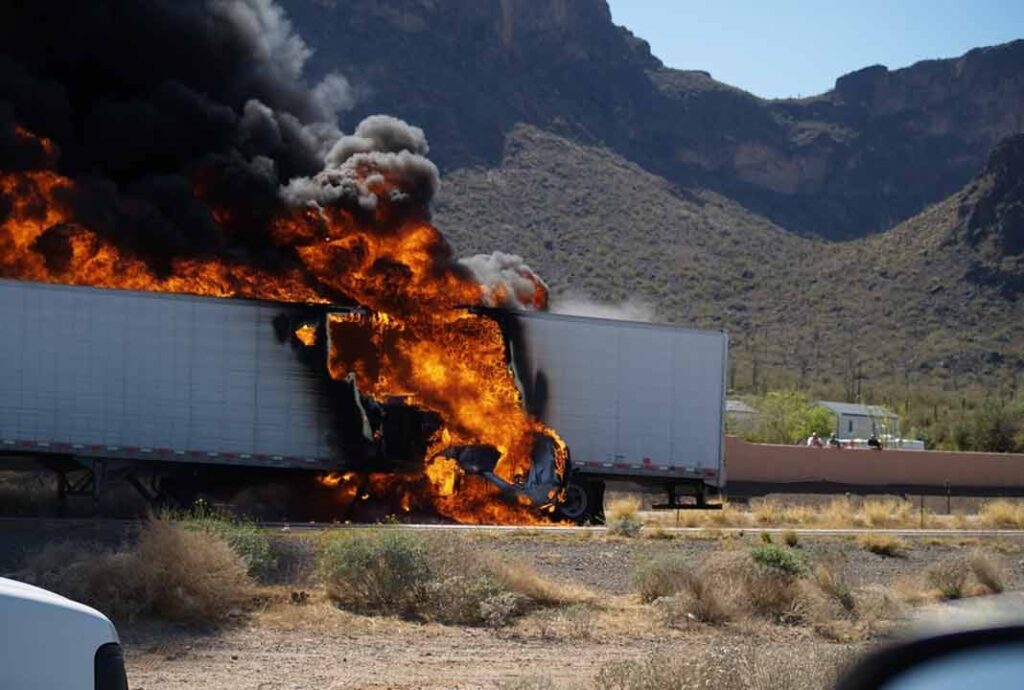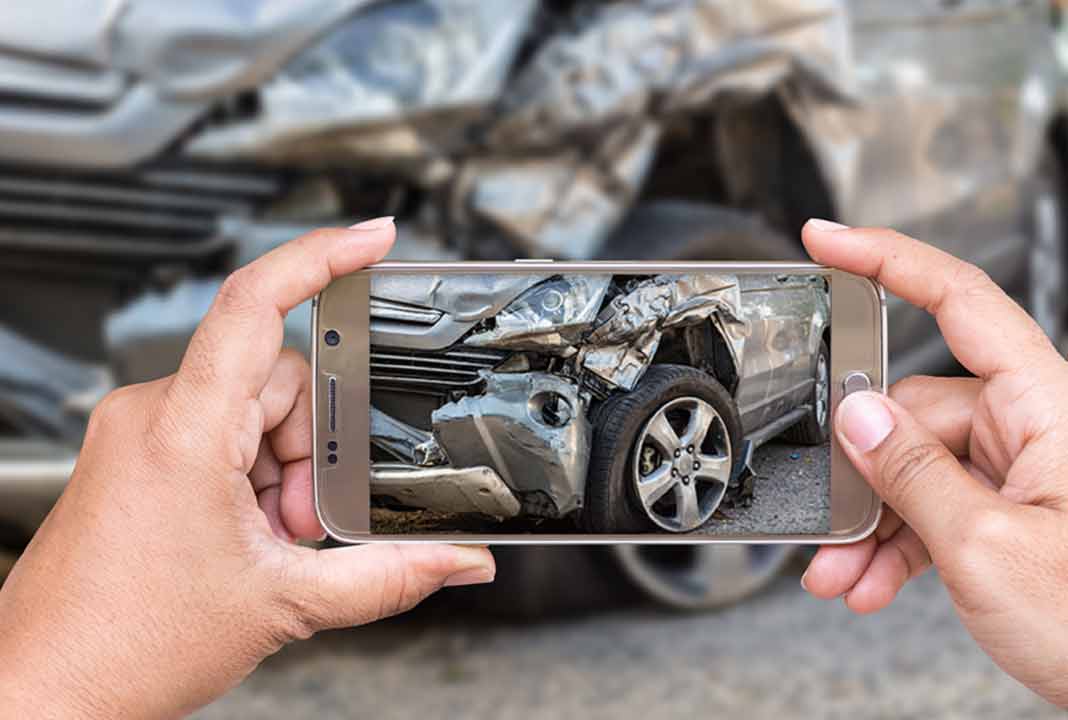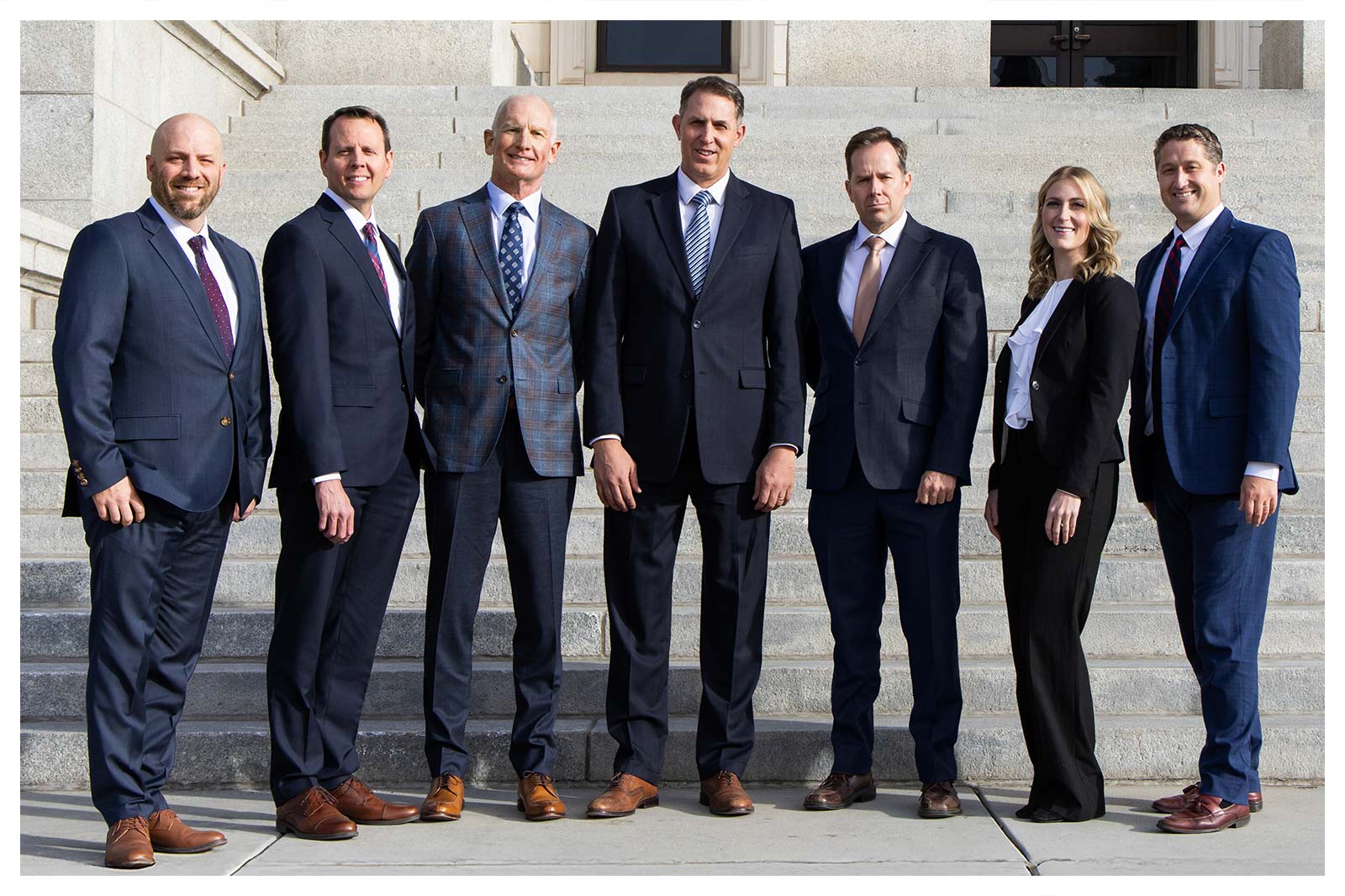

The truck accident claims process technically begins at the scene of the accident since that is where you’ll gather most of the evidence you’ll use in the claims process. The first thing you’ll want to do is call 911 to report the accident. Police will come to the scene and fill out a report. You’ll want to get a copy of that report. It will help you with the insurance claims process.

Ambulances usually accompany police to the accident scene. Even if the accident seems minor, a driver or passenger could be injured. Emergency first responders will provide an on-site physical examination to detect any injuries. Anyone who’s injured will be transported to the hospital for further care.

It’s critical to document everything. To begin, you’ll want a photo of the other driver’s ID and auto insurance cards, as well as pictures of the accident scene. Take pictures from every angle you can so that you have plenty of evidence showing how the accident happened. Take photos from your angle as well as the other driver’s angle. Get up-close and far-away shots of the accident and, most importantly, the damage.
The truck accident claims process involves your injuries, too. If you are injured, having documentation of your injury at the accident scene will help prevent the other driver’s insurance company from claiming that your injuries are unrelated to the accident.
If you are injured but not enough to go to the hospital, go to your primary care provider or local urgent care. This will create a chain of evidence linking your injuries to the accident.
Whose insurance company you call depends on where you live and who was at fault in the accident. In Utah, accidents are “no-fault,” meaning that you report the accident to your insurance company regardless of who hits who. They will pay for a portion of your car repairs and medical bills. Your policy determines the amount they pay.
Utah also has a “comparative negligence” law that works in tandem with its no-fault status. This means that both drivers can be at fault to different extents. If you are less than 50% responsible for an accident in Utah, you can collect compensation for the accident.
If you live in an “at-fault” state, the driver who caused the accident is responsible. Sometimes, blame is 100% one driver’s fault, but it can be 50/50 or unequal. For example, it could be 60/40 or 80/20.
In an at-fault state, this means that both parties are partially responsible. The more fault you have, the more your insurance company will pay the other driver. If you’re 80% responsible for the crash, then your insurance company will pay for 80% of the other driver’s costs. But, in an at-fault state, you can collect 20% of damages from the other party if you’re only 80% responsible.
Being partially or wholly responsible for an accident in an at-fault state is not good since it will cause the cost of your insurance to go up.
Many people assume that the truck driver is responsible for an accident. While this is true in some cases, it’s not a blanket statement for every scenario. Several factors can cause an accident between a truck and a car, including distracted driving, intoxication, speeding, drowsy driving, vehicle malfunctions, inexperience, inclement weather, and much more. Anyone can be responsible for these accidents.
It is often assumed that truck drivers are at risk of severe injuries in a crash, but they are actually better protected than passenger vehicle occupants. Commercial trucks are more robust, sturdy, heavier, and higher up than regular vehicles. Because of this, many truck drivers can walk away from a crash without significant injuries.
Many people think truck drivers are superior because of their commercial driver’s licenses, but this does not make them immune to errors. Truckers can easily make mistakes in the rush to get goods delivered on time. Truck drivers are not always highly experienced and can accidentally cause a wreck.
In many truck accidents, trucking company negligence is the cause of preventable tragedies. Don’t let the company convince you that they cannot be held liable for their driver’s actions. Here are a few reasons why a trucking company might be responsible for an accident:
It’s a common misconception that insurance companies will fairly compensate you in the event of a crash; sadly, this isn’t always the case. Often, their offer is well below what you truly deserve. An attorney will help guide you in this process handle all negotiations on your behalf.
Drug use
Speeding
Unfamiliar with Route
Over-the-counter Medications
Failure to Check Blind Spots
Driver Fatigue
Failure to observe safety measures like signaling turns
Driver distractions
Improper estimates of evasive action
Road Rage
One of the significant differences between semi-truck accidents and car accidents is the severity of injuries. Due to a semi-truck’s size and weight, accidents involving them often result in more severe injuries or fatalities than car accidents.
A semi-truck can weigh up to 80,000 pounds, while the average passenger car weighs around 2 tons — or 4,000 pounds. This means that in a collision, the impact is much greater for the smaller vehicle and its occupants. Additionally, semi-trucks have a much larger blind spot than cars, making it more difficult for truck drivers to see other vehicles, increasing the risk of accidents.
Injuries that are commonly sustained in semi-truck accidents include:
These types of injuries can have long-term effects on the victim’s health and — in some cases — may even result in permanent disability or death.
The size and weight of semi-trucks can also cause significant damage to other vehicles and property, which can add to the overall cost of the accident.
Another key difference between semi-truck accidents and car accidents is the complexities that can arise in insurance and liability issues. Semi-trucks are commercial vehicles and are typically owned and operated by companies or individuals who are in the business of transporting goods. As a result, the insurance and liability issues can be more complex than in a car accident.
In a semi-truck accident, multiple parties may be held liable, including the truck driver, the trucking company, and even the company that owns the cargo being transported. Determining who is at fault for the accident can be a complex process, as it may involve investigating the actions of multiple individuals and entities.
The trucking company’s liability may be affected by federal regulations, such as hours of service rules and maintenance requirements, which can add to the case’s complexity.
Due to the potential for large payouts in semi-truck accident cases, insurance companies may be more likely to contest liability and fight against large settlements. This can make the process of obtaining compensation for injuries and damages more difficult for victims and their families.
Semi-truck accidents, historically, have been caused by a variety of factors, such as the following:
Car accidents are most often caused by factors such as driver distraction or impairment.
Another way semi-truck accidents and car accidents differ is the investigation process. Semi-truck accidents often require a more extensive investigation than car accidents, as multiple parties may be involved, and federal regulations may apply.
When semi-truck accidents occur, investigations typically involve interviewing the truck driver, examining the truck and its maintenance records, and reviewing any electronic data recorders or cameras that may have captured the accident. The cargo being transported and its condition before the accident will also be a point of examination.
Federal regulations, such as hours of service rules and maintenance requirements, also come into play during the investigation process. These regulations are in place to ensure the safety of the truck and its driver, and failure to comply with these regulations can lead to liability for the trucking company and the driver.
The investigation process can take several months, and the results can be used to determine liability and help inform the legal process. The National Transportation Safety Board (NTSB) also investigates significant accidents — like those involving fatalities — in which federal regulations were violated or any other accidents that can be used as a case study to improve transportation safety.
Laws and regulations surrounding commercial vehicles can be complex, requiring specialized legal representation for those involved in such accidents.
An attorney with experience in semi-truck accident cases will advise clients on the potential value of their case and can negotiate with insurance companies and other parties involved in the case to ensure that the client receives fair compensation for their injuries and damages.
While many lawyers are comfortable settling out of court, our personal injury lawyers are always prepared to go to trial if it means getting our clients the compensation they deserve.
We've got a team of private investigators ready to roll up their sleeves and dig into the details to back up our clients’ cases. This is crucial when dealing with semi-truck accidents. Getting all the facts can determine who is at fault.
We issue subpoenas to the phone company of the responsible driver. These records serve as crucial evidence, revealing whether the driver was texting or talking on the phone at the time of the incident.
Surveillance cameras can collect critical evidence that can make a case, illuminating events leading up to the tragedy. Our legal team takes the initiative in gathering and conserving this critical evidence.

When it comes to litigating claims involving truck accidents, the personal injury attorneys of Flickinger • Boulton • Robson • Weeks work tirelessly to ensure that justice is achieved.
Contact Utah’s leading legal team today to arrange for an evaluation of your auto accident case. We would be pleased to advise you of your legal rights and options.
Call our office at (801) 500-4000 to schedule a consultation or discuss your case.
UTAH INJURY LAWYERS
Flickinger • Boulton
• Robson • Weeks
PROVO OFFICE
3000 N University Ave
Suite 300
Provo, UT 84604
SOUTH JORDAN OFFICE
10393 S. Temple Dr.
Suite 103
South Jordan, Utah 84095
OFFICE HOURS
Monday- Friday: 8AM-5PM
Saturday-Sunday: Closed
*Disclaimer: the information provided by this website is for informational purposes only and should not be considered legal advice or a substitute for competent legal counsel.
**SMS consent and contact phone numbers will not be shared or sold to third parties or their affiliates for any purpose.
© 2025 All Rights Reserved.